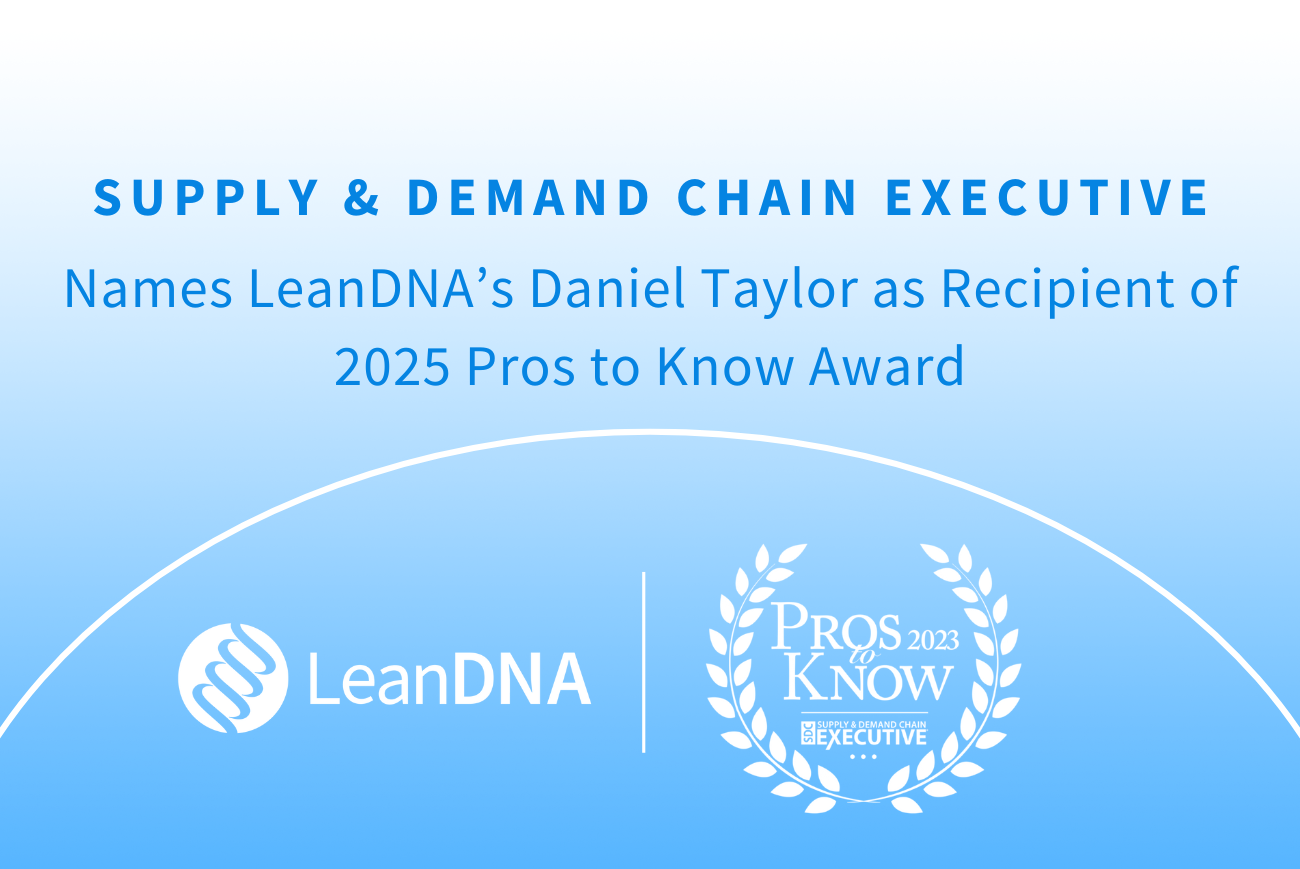Why Do Manufacturing Sites Need Enhanced Supply Chain Visibility
Advances in analytics allow manufacturers to see and interact across sites like never before. There are many benefits to this multi-site visibility - increased inventory savings, happier customers, and less stress. Connecting your sites and standardizing their data using cross-site analytics is the future of manufacturing. Here are 5 benefits of cross-site visibility:
1. More Collaboration Leads to Fewer Shortages
Multi-site supply chain collaboration can identify opportunities where excess inventory at one site can help alleviate shortages at a sister site. Millions of dollars in inventory exist within your supply chain - if you can keep track of every part at every site in a consistent manner, you can reduce shortages across your whole company.
Tools that standardize data across your ERP systems allow collaboration to happen fluidly, even when parts are managed using entirely different item codes and procurement policies. Then, you can track excess and obsolete inventory and monitor other manufacturing sites that might need those parts. This means some of your sites can avoid writing off excess inventory and absorbing those additional costs, while enabling other sites to avoid paying a premium to expedite parts to fulfill their shortages. It’s two savings in one!
2. Executive Data Visibility and Rollup of Metrics
On the executive level, it’s imperative to know the health of your supply chain holistically. But most supply chain data today has to be brought together manually, Individuals at
multiple sites first wrangle their own data. Then, another person has to synthesize and combine each site’s data into one usable format. Only after many man hours across multiple teams can a full data picture be achieved. That’s a lot of time to spend on something that should happen automatically!
Multi-site communication tools can help you roll up metrics across your entire supply chain and sites using standardized data. LeanDNA also lets you filter data by groups of sites so you can better manage performance. There’s no limitation on how you can view, sort, filter, or roll-up your data, so you’ll always be in control of your supply chain - not the other way around.
3. Standardized Best Practices
Every manufacturer aims to drive standard work. The ultimate success is when standard work is shared across your network of manufacturing sites, regardless of physical distance, organizational complexity, or business system. Beyond developing the best possible standard work, how can you achieve this?
Find one tool that acts as a single source of truth. From this platform, your team can drive operational excellence and share best practices between sites. Leverage your unified tool to drive weekly meetings where site leaders share how they’ve driven inventory down while avoiding shortages so other sites can experience similar results. When you include tools in your standard work that actually help drive your supply chain success, it helps bring your whole company onto the same page. This saves you time, money, and helps ensure that the best possible work is being done at every site.
4. Better PPV Analysis and Price Comparison
It’s one thing to set corporate policies, but it’s a much bigger issue to maintain compliance with those policies. Spend analytics tools will monitor your buying team’s purchase price variance (PPV) across all of your parts, comparing your purchase order prices with the standard prices set by your budgeting department. But wouldn’t it be better if you could ensure that every site is paying the lowest possible price for every part?
Multi-site analytics allows your team to see what other sites are paying for the same parts so you can identify where you can get a better price. Alerting systems can warn your team when PPV goes out of control so your team can run root-cause analysis to avoid future excessive spending. But it’s not just for highlighting problems - these systems can also identify areas where your team is saving money by negotiating better buying prices and recognizing your team’s hard work!
5. Standardize Data Across Sites and Disparate ERP Systems
In manufacturing, ERP systems can be clunky and costly to manage. And we often see disparate ERP instances within the same company, from SAP and Oracle to Infor systems and more. Multi-site visibility helps you roll up all this disconnected data into one uniform platform.
Instead of investing millions of dollars and company bandwidth changing over your ERP systems to a unified system, you could standardize your data across sites. Your site in Atlanta should be able to access pricing data from your site in LA. And your executive team in Houston should be able to view performance data from both sites in the same platform during their meetings. If you have one tool like LeanDNA that can talk to all your ERP systems and standardize cross-site data, you will save time and money and further standardize processes within your organization.
Supply Chain Visibility Advantages
Cross-site visibility has many benefits across your supply chain - easier reporting, less time spent and headaches for your team, and more cost savings. If you want to see how fast and easy it is to implement a tool to increase your cross-site visibility, schedule a 30-minute demo of LeanDNA today.
When implementing practices to improve supply chain visibility, manufacturers see many benefits.
Including eliminating data silos. By increasing visibility in the supply chain, and removing boundaries between teams, todays top manufacturers are seeing infinite improvements in their procurement processes.
Learn more about the cost of siloed data.
Your company’s leadership is the foundation of your performance in the digital supply chain.
By supporting continued business growth by investing in new technologies and improving management processes, leaders in the manufacturing space can empower their teams to do more.
See how these aerospace manufacturing execs were able to exceed shareholder demands.



